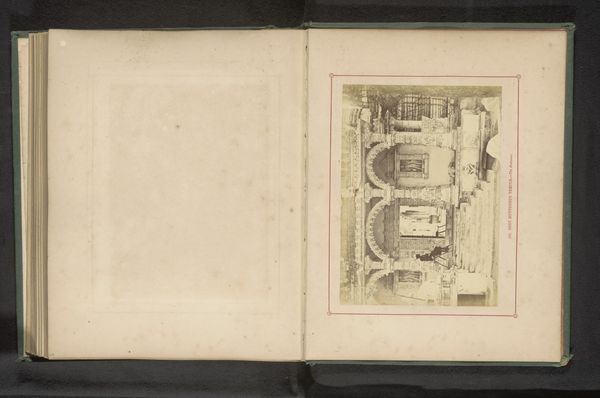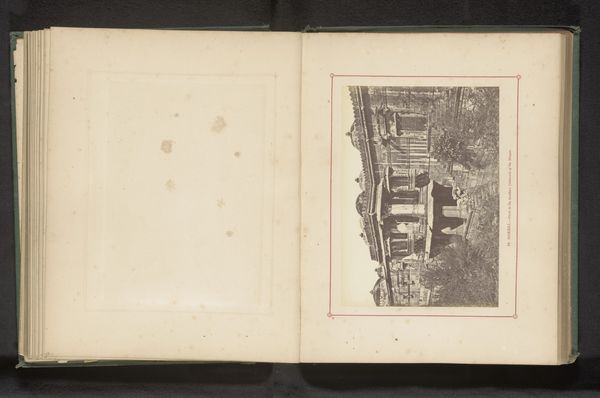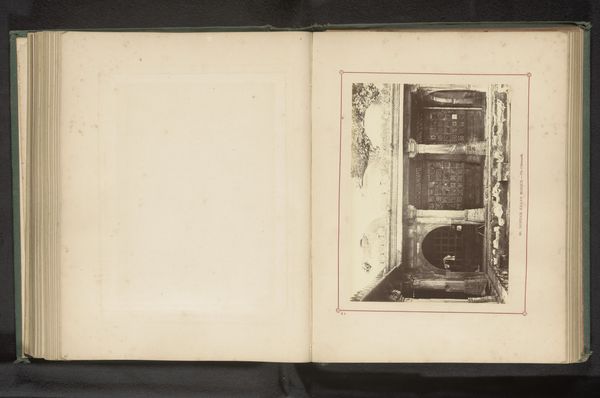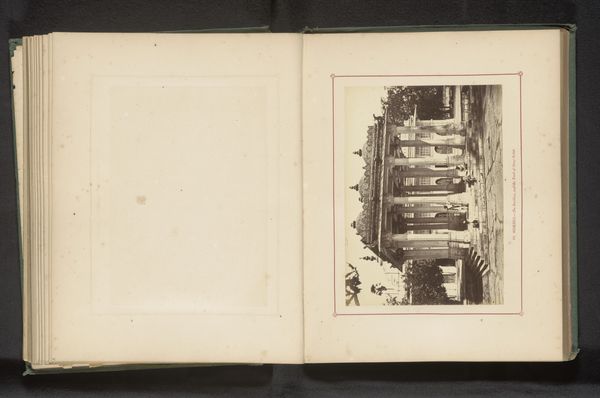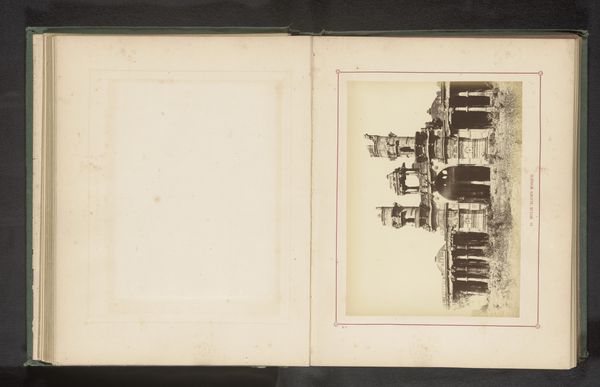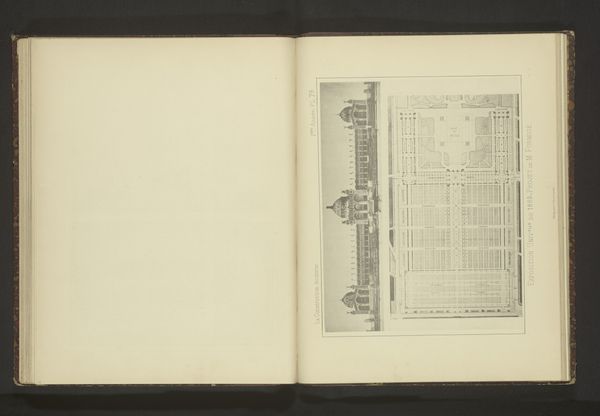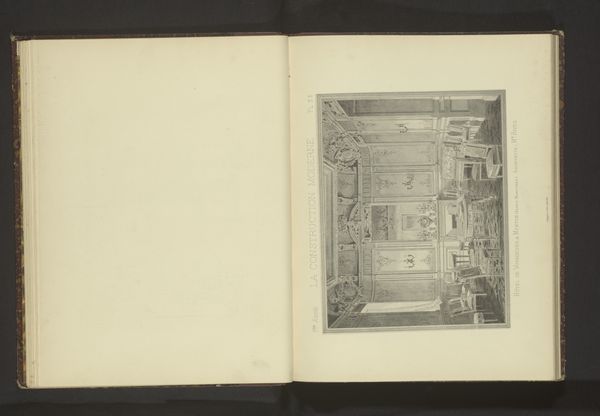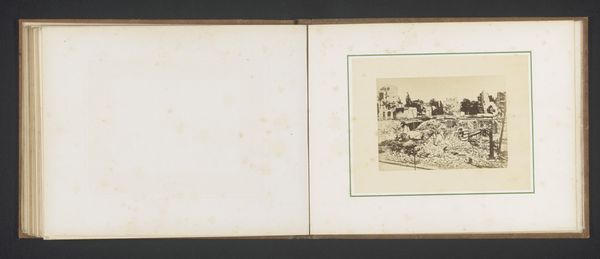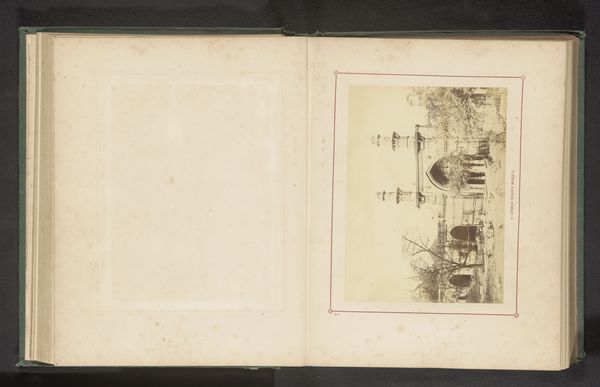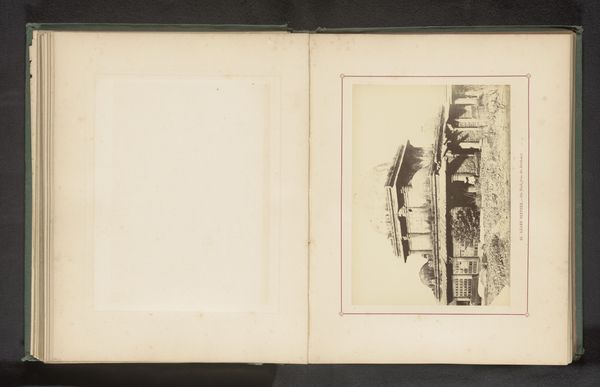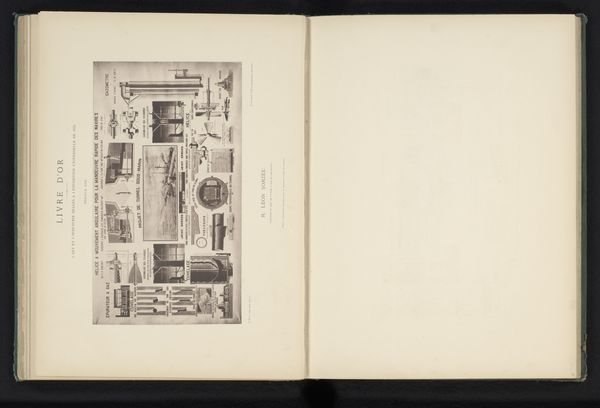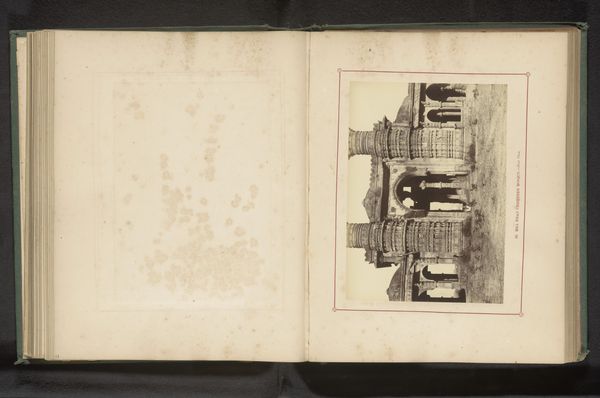
Gezicht op de minaretten en een poort van de Sidi Bashir-moskee in Ahmedabad before 1866
print, photography, albumen-print, architecture
landscape
photography
ancient-mediterranean
islamic-art
albumen-print
architecture
Dimensions: height 135 mm, width 188 mm
Copyright: Rijks Museum: Open Domain
Curator: Let's discuss this intriguing albumen print, taken before 1866 by Thomas Biggs: "Gezicht op de minaretten en een poort van de Sidi Bashir-moskee in Ahmedabad," or "View of the Minarets and a Gate of the Sidi Bashir Mosque in Ahmedabad." Editor: My initial impression is one of captured grandeur; there's a delicate interplay of light and shadow playing across the textured stone, which gives the architecture an almost living quality. The details of the minarets seem incredibly intricate, especially for such an early photographic print. Curator: The materiality speaks volumes. The albumen process itself, using egg whites, is fascinating. This was a key method for producing highly detailed prints in that era. The final product, an image of lasting record, embodies the encounter between British colonial photography and Islamic architecture. The materiality highlights cultural exchange and power dynamics of that time. Editor: Absolutely. For me, the gate acts as a symbolic threshold between the known and the unknown, the earthly and the spiritual. The minarets reaching toward the sky evoke a sense of aspiration, of transcendence, consistent with the imagery one expects from sacred sites. Curator: Thinking about the laborers involved in constructing the mosque itself, their skill and craftsmanship is immortalized through Biggs' print. It’s a testament to pre-industrial modes of production, particularly how elaborate this image is considering the production techniques involved. Also, the very act of photographing a mosque underscores a colonial gaze documenting and perhaps appropriating a different culture’s material heritage. Editor: And that gaze continues to shape our perception, doesn't it? Even the slight blurring of figures around the structure suggests an impermanence—a subtle memento mori perhaps hinting that these magnificent monuments and those who once used it are fleeting through time. I wonder what significance that particular location had for Biggs. What was he trying to capture and relay to others in its composition? Curator: Interesting. Thinking of the cultural and economic investment in constructing something like the Sidi Bashir Mosque reminds me that this image encapsulates a historical network of material production. We can consider who was commissioning art and architecture like this and what their objectives might have been. It reveals so much about the context of image making at this moment in time. Editor: It does make you ponder, doesn't it? These layers of symbolism—cultural, historical, artistic— invite extended contemplation of Biggs' documentation. Curator: Agreed. I find the work to be a captivating historical artifact—rich in materials, context and cultural insight, with production and image entwined. Editor: I, on the other hand, see that those early photographs have an enduring symbolic pull that transcends any simple documentary.
Comments
No comments
Be the first to comment and join the conversation on the ultimate creative platform.
